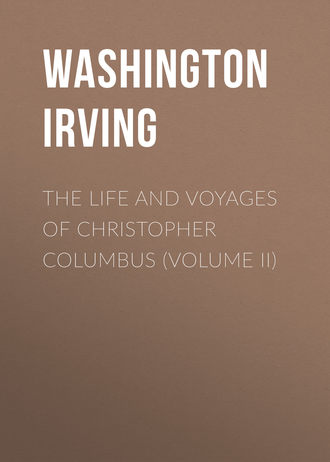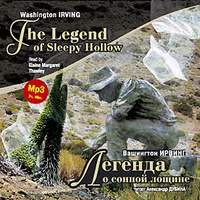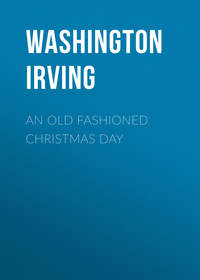 полная версия
полная версияThe Life and Voyages of Christopher Columbus (Volume II)
114
These documents lay unknown in the Oderigo family until 1670, when Lorenzo Oderigo presented them to the government of Genoa, and they were deposited in the archives. In the disturbances and revolutions of after times, one of these copies was taken to Paris, and the other disappeared. In 1816 the latter was discovered in the library of the deceased Count Michel Angelo Cambiaso, a senator of Genoa. It was procured by the king of Sardinia, then sovereign of Genoa, and given up by him to the city of Genoa in 1821. A custodia, or monument, was erected in that city for its preservation, consisting of a marble column supporting an urn, surmounted by a bust of Columbus. The documents were deposited in the urn. These papers have been published, together with an historical memoir of Columbus, by D. Gio. Battista Spotorno, Professor of Eloquence, etc. in the University of Genoa.
115
Hist. del Almirante, cap. 88.
116
Señor Navarrete supposes this island to be the same at present called Santa Lucia. From the distance between it and Dominica, as stated by Fernando Columbus, it was more probably the present Martinica.
117
Hist. del Almirante, cap. 88.
118
Letter of Columbus from Jamaica. Journal of Porras, Navarrete, tom. i.
119
Hist. del Almirante, cap. 88. Las Casas, lib. ii. cap. 5.
120
Las Casas, Hist. Ind., lib. ii. cap. 3.
121
Las Casas, cap. 5.
122
Las Casas, cap. 5.
123
Las Casas ubi sup.
124
Las Casas, Hist. Ind., lib. ii. cap. 5. Hist. del Almirante, cap. 88.
125
Supposed to be the Morant Keys.
126
Called in some of the English maps Bonacca.
127
Journal of Porras, Navarrete, tom. i.
128
Las Casas, lib. ii. cap. 20. Letter of Columbus from Jamaica.
129
Journal of Porras, Navarrete, Colec., tom. i.
130
Las Casas, lib. ii. cap. 21. Hist. del Almirante, cap. 90.
131
Hist. del Almirante, cap. 80.
132
Letter from Jamaica. Navarrete, Colec., tom. i.
133
Las Casas, lib ii. cap. 21. Hist. del Almirante, cap. 91.
134
P. Martyr, decad. iii. lib. iv. These may have been the lime, a small and extremely acid species of the lemon.
135
Las Casas, lib. ii. cap. 21. Hist. del Almirante, cap. 91. Journal of Porras.
136
Hist. del Almirante, cap. 91.
137
Letter from Jamaica.
138
Note. – We find instances of the same kind of superstition in the work of Marco Polo, and as Columbus considered himself in the vicinity of the countries described by that traveler, he may have been influenced in this respect by his narrations. Speaking of the island of Soccotera (Socotra), Marco Polo observes: "The inhabitants deal more in sorcery and witchcraft than any other people, although forbidden by their archbishop, who excommunicates and anathematizes them for the sin. Of this, however, they make little account, and if any vessel belong to a pirate should injure one of theirs, they do not fail to lay him under a spell, so that he cannot proceed on his cruise until he has made satisfaction for the damage; and even although he should have a fair and leading wind, they have the power of causing it to change, and thereby obliging him, in spite of himself, to return to the island. They can, in like manner, cause the sea to become calm, and at their will can raise tempests, occasion ship-wrecks, and produce many other extraordinary effects that need not be particularized." – Marco Polo, Book iii. cap. 35, Eng. translation by W. Marsden.
139
Las Casas, lib. ii. cap. 21. Hist. del Almirante cap. 91.
140
Las Casas, lib. ii. cap. 21. Hist. del Almirante, cap. 91. Letter of Columbus from Jamaica.
141
In some English maps this bay is called Almirante, or Carnabaco Bay. The channel by which Columbus entered is still called Boca del Almirante, or the mouth of the Admiral.
142
Journal of Porras, Navarrete, tom. i.
143
P. Martyr, decad. iii. lib. v.
144
Columbus' Letter from Jamaica.
145
Hist. del Almirante, cap. 92.
146
Idem.
147
Letter of Columbus from Jamaica. Navarrete, Colec., tom. i. Vol. II. – 12.
148
Las Casas, lib. ii. cap. 23. Hist. del Almirante.
149
Peter Martyr, decad. iii. lib. iv.
150
Las Casas, lib. ii. cap. 23. Hist. del Almirante, cap. 92.
151
Las Casas. lib. ii. cap. 23. Hist. del Almirante, cap. 92.
152
It appears doubtful whether Columbus was acquainted with the exact particulars of that voyage, as they could scarcely have reached Spain previously to his sailing. Bastides had been seized in Hispaniola by Bobadilla, and was on board of that very fleet which was wrecked at the time that Columbus arrived off San Domingo. He escaped the fate that attended most of his companions, and returned to Spain, where he was rewarded by the sovereigns for his enterprise. Though some of his seamen had reached Spain previous to the sailing of Columbus, and had given a general idea of the voyage, it is doubtful whether he had transmitted his papers and charts. Porras, in his journal of the voyage of Columbus, states that they arrived at the place where the discoveries of Bastides terminated; but this information he may have obtained subsequently at San Domingo.
153
Las Casas, lib. ii. cap. 24. Hist. del Almirante, cap. 90.
154
Hist. del Almirante, cap. 94.
155
Hist. del Almirante, cap. 94.
156
A superstitious notion with respect to gold appears to have been very prevalent among the natives. The Indians of Hispaniola observed the same privations when they sought for it, abstaining from food and from sexual intercourse. Columbus, who seemed to look upon gold as one of the sacred and mystic treasures of the earth, wished to encourage similar observances among the Spaniards; exhorting them to purify themselves for the research of the mines by fasting, prayer, and chastity. It is scarcely necessary to add, that his advice was but little attended to by his rapacious and sensual followers.
157
Hist. del Almirante, cap. 95.
158
Las Casas, lib. ii. cap. 25. Hist. del Almirante, cap. 95.
159
Peter Martyr, decad. iii. lib. iv.
160
Letter of the Admiral from Jamaica.
161
Las Casas, lib. ii. cap. 25. Hist. del Almirante, cap. 95.
162
Letter of Columbus from Jamaica.
163
Hist. del Almirante, cap. 96.
164
Letter from Jamaica.
165
Equivalent to one thousand two hundred and eighty-one dollars at the present day.
166
Hist. del Almirante, cap. 98. Las Casas, lib. ii. cap. 27. Many of the particulars of this chapter are from a short narrative given by Diego Mendez, and inserted in his last will and testament. It is written in a strain of simple egotism, as he represents himself as the principal and almost the sole actor in every affair. The facts, however, have all the air of veracity, and being given on such a solemn occasion, the document is entitled to high credit. He will be found to distinguish himself on another hazardous and important occasion in the course of this history. – Vide Navarrete, Colec., tom. i.
167
Hist. del Almirante, cap. 98. Las Casas, lib. ii. Letter of Columbus from Jamaica. Relation of Diego Mendez, Navarrete, tom. i. Journal of Porras, Navarrete, tom. i.
168
Hist. del Almirante, cap. 99.
169
Letter of Columbus from Jamaica.
170
Hist. del Almirante, cap. 99, 100. Las Casas, lib. ii. cap. 29. Relacion por Diego Mendez. Letter of Columbus from Jamaica. Journal of Porras, Navarrete, Colec., tom. i.
171
Hist. del Almirante. Letter from Jamaica.
172
Journal of Porras, Navarrete, Colec., tom. i.
173
Letter from Jamaica.
174
Testimony of Pedro de Ledesma. Pleito de los Colones.
175
Letter from Jamaica.
176
Idem.
177
Hist. del Almirante, cap. 100. Letter of Columbus from Jamaica.
178
Hist. del Almirante. Journal of Porras.
179
Relacion por Diego Mendez. Navarrete, torn. i.
180
Relacion por Diego Mendez. Navarrete, Colec, torn. i.
181
Joachim, native of the burgh of Celico, near Cozenza, traveled in the Holy Land. Returning to Calabria, he took the habit of the Cistercians in the monastery of Corazzo, of which he became prior and abbot, and afterwards rose to higher monastic importance. He died in 1202, having attained 72 years of age, leaving a great number of works; among the most known are commentaries on Isaiah, Jeremiah, and the Apocalypse. There are also prophecies by him, "which," (says the Dictionnaire Historique,) "during his life, made him to be admired by fools, and despised by men of sense; at present the latter sentiment prevails. He was either very weak or very presumptuous, to flatter himself that he had the keys of things of which God reserves the knowledge to himself." – Dict. Hist., tom. 5, Caen, 1785.
182
Hist, del Almirante, cap. 101.
183
Hist, del Almirante, cap. 102.
184
Letter of Columbus to his son Diego. Navarrete, Colec. Vol. II. -15
185
Hist, del Almirante, cap. 102.
186
Las Casas, Hist. Ind., lib. ii. cap. 32. Hist, del Almirante, cap. 102.
187
Hist, del Almirante, cap. 102.
188
Las Casas, lib. ii. cap. 32.
189
Hist. del Almirante, cap. 102. Las Casas, lib. ii. cap. 32.
190
Hist. del Almirante, cap. 103. Las Casas, Hist. Ind., lib. ii. cap. 33.
191
Hist. del Almirante, cap. 104.
192
Las Casas, Hist. Ind., lib. ii. cap. 33.
193
Las Casas, Hist. Ind., lib. ii. cap. 33. Hist. del Almirante cap. 103.
194
Las Casas, ubi sup. Hist. del Almirante, ubi sup.
195
Not far from the Island of Navasa there gushes up in the sea a pure fountain of fresh water that sweetens the surface for some distance: this circumstance was of course unknown to the Spaniards at the time. (Oviedo, Cronica, lib. vi. cap. 12.)
196
Hist. del Almirante, cap. 105. Las Casas, lib. ii. cap. 31. Testament of Diego Mendez. Navarrete, tom. i.
197
Las Casas, lib. ii. cap. 35. Hist. del Almirante, cap. 106.
198
Hist. del Almirante, cap. 106. Las Casas, lib. ii. cap. 35.
199
At present Mammee Bay.
200
Hist. del Almirante, ubi sup.
201
Hist. del Almirante, cap. 107. Las Casas, Hist. Ind., lib ii. cap. 35.
202
Las Casas, Hist. Ind., lib. ii. cap. 35.
203
Las Casas, Hist. Ind., lib. ii. cap. 32.
204
Some brief notice of the further fortunes of Diego Mendez may be interesting to the reader. When King Ferdinand heard of his faithful services, says Oviedo, he bestowed rewards upon Mendez, and permitted him to bear a canoe in his coat of arms, as a memento of his loyalty. He continued devotedly attached to the admiral, serving him zealously after his return to Spain, and during his last illness. Columbus retained the most grateful and affectionate sense of his fidelity. On his death-bed he promised Mendez that, in reward for his services, he should be appointed principal Alguazil of the island of Hispaniola; an engagement which the admiral's son, Don Diego, who was present, cheerfully undertook to perform. A few years afterwards, when the latter succeeded to the office of his father, Mendez reminded him of the promise, but Don Diego informed him that he had given the office to his uncle Don Bartholomew; he assured him, however, that he should receive something equivalent. Mendez shrewdly replied, that the equivalent had better be given to Don Bartholomew, and the office to himself, according to agreement. The promise, however, remained unperformed, and Diego Mendez unrewarded. He was afterwards engaged on voyages of discovery in vessels of his own, but met with many vicissitudes, and appears to have died in impoverished circumstances. His last will, from which these particulars are principally gathered, was dated in Valladolid, the 19th of June, 1536, by which it is evident he must have been in the prime of life at the time of his voyage with the admiral. In this will he requested that the reward which had been promised to him should be paid to his children, by making his eldest son principal Alguazil for life of the city of San Domingo, and his other son lieutenant to the admiral for the same city. It does not appear whether this request was complied with under the successors of Don Diego.
In another clause of his will, he desired that a large stone should be placed upon his sepulchre, on which should be engraved, "Here lies the honorable Cavalier Diego Mendez, who served greatly the royal crown of Spain, in the conquest of the Indies, with the admiral Don Christopher Columbus, of glorious memory, who made the discovery; and afterwards by himself, with ships at his own cost. He died, &c., &c. Bestow in charity a Paternoster, and an Ave Maria."
He ordered that in the midst of this stone there should be carved an Indian canoe, as given him by the king for armorial bearings in memorial of his voyage from Jamaica to Hispaniola, and above it should be engraved in large letters the word "CANOA." He enjoined upon his heirs to be loyal to the admiral (Don Diego Columbus), and his lady, and gave them much ghostly counsel, mingled with pious benedictions. As an heirloom in his family, he bequeathed his library, consisting of a few volumes, which accompanied him in his wanderings; viz. "The Art of Holy Dying, by Erasmus; A sermon of the same author, in Spanish; The Lingua, and the Colloquies of the same; The History of Josephus; The Moral Philosophy of Aristotle; The Book of the Holy Land; A Book called the Contemplation of the Passion of our Savior; A Tract on the Vengeance of the Death of Agamemnon, and several other short treatises." This curious and characteristic testament is in the archives of the Duke of Veragua in Madrid.
205
Las Casas, Hist. Ind., lib. ii. cap. 6.
206
Las Casas, Hist. Ind., lib. ii. cap. 14, MS.
207
Idem, ubi sup.
208
Las Casas, Hist. Ind., lib. ii. cap. 9.
209
Oviedo, Cronica de las Indias, lib. iii. cap. 12.
210
Las Casas, Hist. Ind., lib. ii. cap. 9.
211
Charlevoix, Hist. San Domingo, lib. xxiv. p. 235.
212
Relacion hecha por Don Diego Mendez. Navarrete, Col., tom. i. p. 314.
213
Oviedo, Cronica de las Indias, lib. iii. cap. 12. Las Casas, Hist. Ind., lib. ii. cap. 9.
214
Oviedo, Cronica de las Indias, lib. iii. cap. 12.
215
Las Casas, Hist. Ind., lib. ii. cap. 8.
216
Las Casas, ubi. sup.
217
Las Casas, ubi. sup.
218
Las Casas, lib. ii. cap. 17, MS.
219
Las Casas, Hist. Ind., lib. ii. cap. 18.
220
Las Casas, Hist. Ind., lib. ii. cap. 36.
221
Letter of Columbus to his son Diego, Seville, Nov. 21, 1504. Navarrete, Colec., tom. i.
222
Letter of Columbus to his son Diego, dated Seville, 3d Dec., 1504. Navarrete, tom. i. p. 341.
223
Navarrete, Colec., tom. ii. decad. 151, 152.
224
Herrera, Hist. Ind., decad. i. lib. v. cap. 12.
225
Hist. del Almirante, cap. 108. Las Casas, Hist. Ind., lib. ii. cap. 36.
226
Let. Seville, 13 Dec., 1504. Navarrete, v. i. p. 343.
227
The dying command of Isabella has been obeyed. The author of this work has seen her tomb in the royal chapel of the Cathedral of Granada, in which her remains are interred with those of Ferdinand. Their effigies, sculptured in white marble, lie side by side on a magnificent sepulchre. The altar of the chapel is adorned with bas reliefs representing the conquest and surrender of Granada.
228
Elogio de la Reina Catolica por D. Diego Clemencin. Illustration 19.
229
Letter to his son Diego, Dec. 3,1504.
230
Letter of December 21,1504. Navarrete, torn. i. p. 346.
231
Las Casas, Hist. Ind., lib. ii. cap. 37. Herrera, Hist. Ind., decad. i. lib. vi. cap. 13.
232
Las Casas, Hist. Ind, lib. ii. cap. 37, MS.
233
Navarrete, Colec., tom. i.
234
Diego, the son of the admiral, notes in his own testament this bequest of his father, and says, that he was charged by him to pay Beatrix Enriquez 10,000 maravedis a year, which for some time he had faithfully performed; but as he believes that for three or four years previous to her death he had neglected to do so, he orders that the deficiency shall be ascertained and paid to her heirs. Memorial ajustado sobre la propriedad del mayorazgo que foudo D. Christ. Colon, § 245.
235
Cura de los Palacios, cap. 121.
236
Las Casas, Hist. Ind., lib. ii. cap. 38. Hist, del Almirante, cap. 108.
237
D. Humboldt. Examen Critique.
238
Cladera, Investigaciones historias, p. 43.
239
Navarrete, Colec., tom. ii. p. 365.
240
Herrera, Hist. Ind., decad. ii. lib. vii. cap. 4.
241
Extracts from the minutes of the process taken by the historian Muñoz, MS.
242
Further mention will be found of this lawsuit in the article relative to Amerigo Vespucci.
243
Charlevoix, ut supra, v. i. p. 272, id. 274.
244
Las Casas, lib. ii. cap. 49, MS.
245
Las Casas, lib. ii. cap. 49, MS.
246
Herrera, decad. i. lib. vii. cap, 12.
247
Idem.
248
Charlevoix, Hist. St. Domingo, p. 321.
249
Herrera, Hist. Ind., decad i. lib. ix. cap. 5.
250
Idem.
251
Herrera, decad. ii. lib. ii. cap. 7.
252
Idem, decad. 1. lib. x. cap. 16.
253
Charlevoix, Hist. St. Doming., lib. v.
254
Herrera, decad. ii. lib. ix. cap. 7.
255
Herrera, Hist. Ind., decad. iii. lib. iv. cap. 9.
256
Idem, decad. iii. lib. v. cap. 4.
257
Charlevoix, Hist. St. Doming., lib. Ti.
258
Herrera, decad. Hi. lib. Tut. cap. 15.
259
Memorial ajustado sobre el estado de Veragua.
Charlevoix mentions another son called Diego, and calls one of the daughters Phillipine. Spotorno says that the daughter Maria took the veil; confounding her with a niece. These are trivial errors, merely noticed to avoid the imputation of inaccuracy. The account of the descendants of Columbus here given, accords with a genealogical tree of the family, produced before the council of the Indies, in a great lawsuit for the estates.
260
Herrern, decad. iv. lib. ii. cap. 6.
261
Charlevoix, Hist. St. Doming., lib. vi. p. 443.
262
Idem, tom. i. lib. vi. p. 446.
263
Spotorno, Hist. Colom., p. 123.
264
Bossi, Hist. Colom. Dissert., p. 67.
265
Idem, Dissert. on the Country of Columbus, p. 03.
266
Bossi, Dissertation on the Country of Columbus.
267
Spotorno, p. 127.
268
Literally, in the original, Cazador de Volateria, a Falconer. Hawking was in those days an amusement of the highest classes; and to keep hawks was almost a sign of nobility.
269
Herrera, decad. i. lib. i. cap. 7.
270
Dissertation, &c.
271
Bossi. French Translation, Paris, 1824, p. 09.
272
Idem.
273
Correspondence Astronom. Geograph. &c. de Baron du Zach, vol. 14, cabier 6, lettera 29. 1826.
274
Felippo Alberto Pollero, Epicherema, cioe breve discorso per difess di sua persona e carrattere. Torino, per Gio Battista Zappata. MCDXCVI. (read 1696) in 40. pag. 47.
275
Spotorno, Eng. trans., pp. xi, xii.
276
Bossi, French trans., p. 76.
277
Idem, p. 88.
278
Cura de los Palacios, MS., cap. 118.
279
Alex. Geraldini, Itin. ad. Reg. sub. Aquinor.
280
Antonio Gallo, Anales of Genoa, Muratori, tom. 23.









